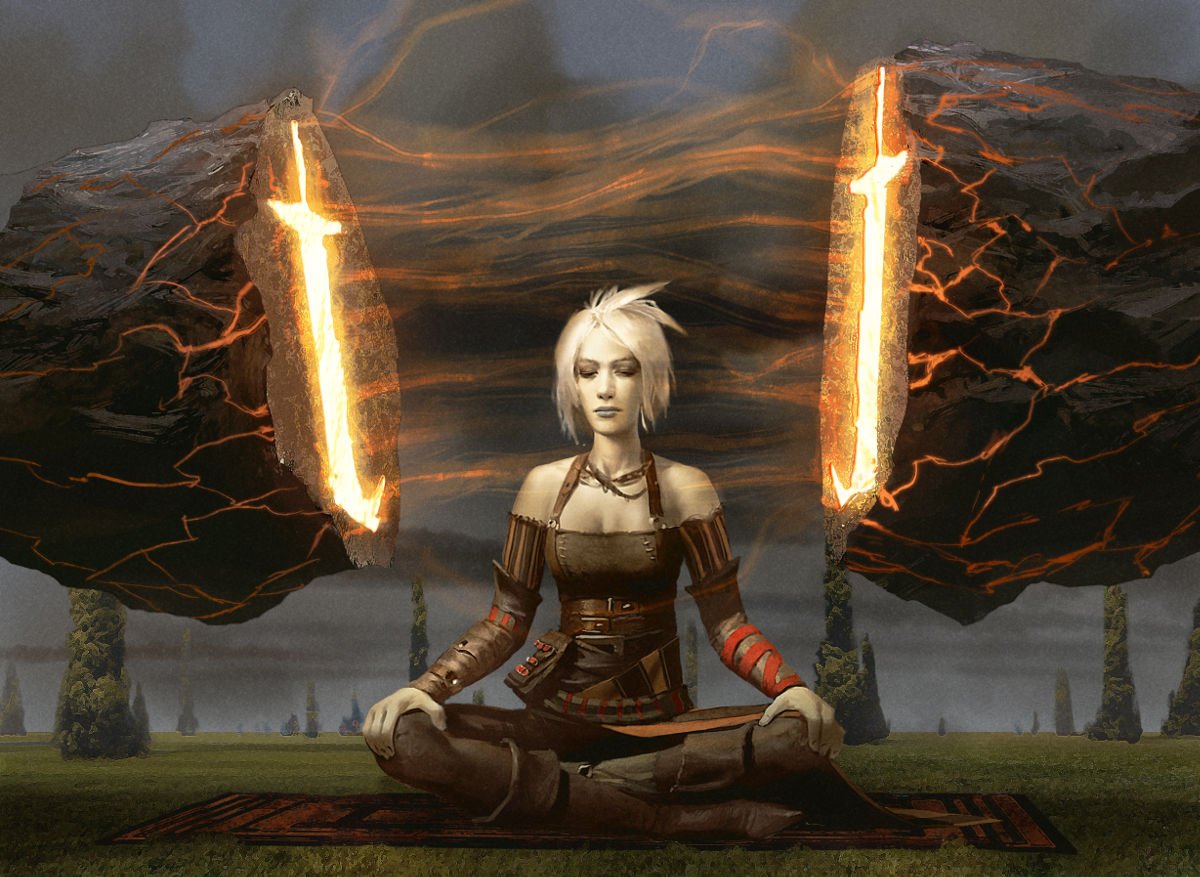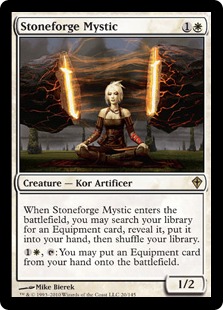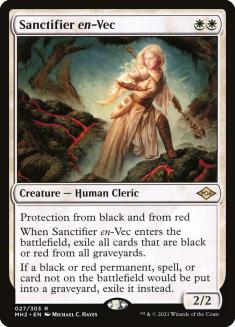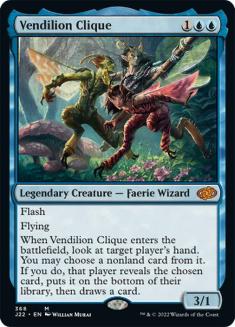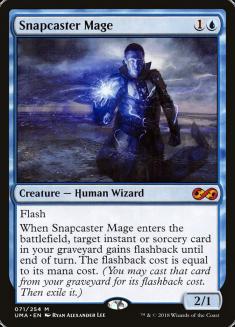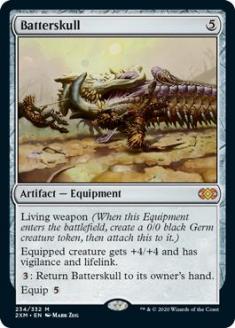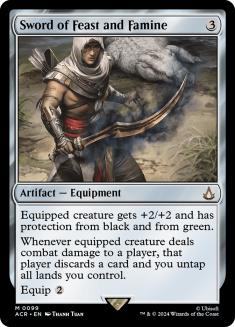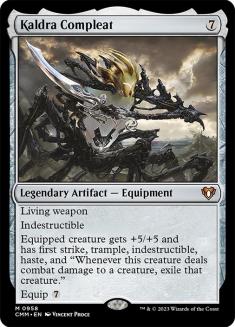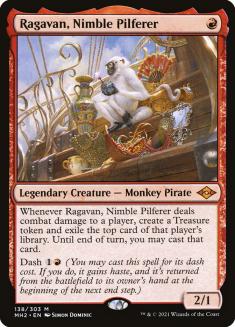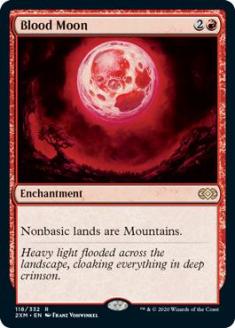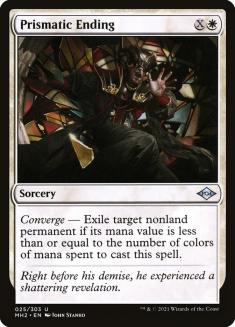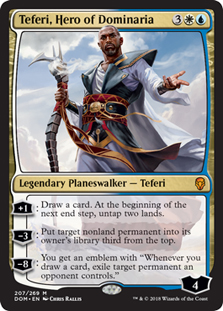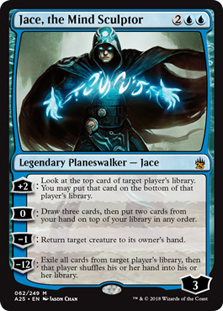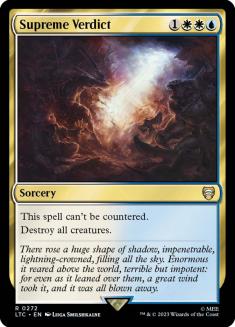There is a viability overload for control decks in Modern. Thanks to the return of Counterspell, playing blue in this format has never felt as good as it does now. I was no stranger to wielding Azorius Control when things were tough in Modern; however, I often defected to combo decks to make my life easier. Even though control decks were not lighting up the scoreboard, there was enough success by the masses to keep them in the forefront of the format.
With Modern Horizons 2 in full swing, the decision to play control is easy. Choosing which specific archetype to play has been the exciting challenge these last few weeks.
In my last article, I presented my take on Azorius Control. This was the first of many decklists to come, as I discussed the expanded viability of all blue-based decks in the format. Although I think Azorius Control is the strongest, there are viable Esper Control and Stoneblade lists that can easily combat the stabilized metagame, determined by recent Magic Online events. There’s a great deal of exploring that still needs to occur, but we have a good idea of what decks will be prevalent based off these events.
We see many of the same decks being represented in Modern. To the benefit of control, the metagame decks still lump together, giving us a clear deckbuilding path to be successful. Many of the aggressive decks have moved into Izzet, mostly leaning on Prowess, with only a few outliers. This is the main reason I have loved Sanctifier en-Vec, as it handles problematic graveyard strategies while being a pro-red body against aggro. It’s also very difficult to kill, especially with Skullcrack out of the picture. Even though it does not gain life like Kor Firewalker, its application against multiple decks makes it a valuable card to have in the sideboard.
Sanctifier en-Vec has been great for me in Azorius Control, but it’s even stronger in a deck that can better utilize creatures. The same can be said for Solitude, which often remains on the battlefield in the mid- to late-game. I have recently dabbled with other creatures in the maindeck, like Vendilion Clique, which joins Snapcaster Mage as a Wizard that can provide tremendous upside with Riptide Laboratory. All these control creatures do great work in any control deck, but there’s a better home awaiting them.
Stoneblade is the creature-based control deck that I never want to put down. I have played more of this archetype in Legacy than anyone I know, defeating opponents with powerful control spells while my powerful 1/2 holds down the battlefield. One of my biggest unbanning missions was behind this creature, begging Wizards of the Coast (WotC) to judge its current application, not its past. Although Stoneforge Mystic was a menace in Standard, its play in older formats has been as fair as it gets.
One of the concerns of folks that wanted to keep it banned was the limitation it brings with new Equipment entering the game. This is a valid argument against Stoneforge Mystic but was not enough to keep it out of Modern in my view. I was confident that nothing could top Batterskull and Sword of Feast and Famine, leaving the design possibilities wide open to build weaker versions of each.
With each passing set, this seemed to be the case, even when they previewed Sword of Hearth and Home. The Equipment was crafted for Commander and I was content crafting my Stoneblade deck with the same, locked in options that have always been there. Things changed when I caught a glimpse of Kaldra Compleat.
The critics may have been correct all along. Kaldra Compleat is not a better card than Batterskull or Sword of Feast and Famine; however, it does create a non-interactive experience in comparison. Stoneforge Mystic could be easily dealt with, leaving the controller with expensive Equipment that may not affect the battlefield for multiple turns. When our Equipment enabler was not slain, times were tough for most opponents, especially aggro ones, when a wild Batterskull appeared. Even though Batterskull is a nightmare for some players, it, or the Germ, were relatively easily to deal with.
When it comes to Kaldra Compleat, the traditional Stoneforge Mystic gameplay gets thrown out the window. The Equipment, and the wielder, are indestructible, while hosting an array of other abilities. Being unable to remove this threat is the key issue for opponents facing it down, one that has not existed in previous Equipment packages over the years.
Without lifelink, Kaldra Compleat will never replace Batterskull. But what this new Equipment did was increase the strength of Stoneblade decks, give some legitimacy to the critics who wanted Stoneforge Mystic to remain banned, and make life very difficult to decks without a method to exile a permanent.
The Equipment package of Kaldra Compleat, Batterskull, and Sword of Feast and Famine has made the inclusion of the mythic Elemental Incarnations seamless. I was looking for an excuse to get Subtlety back in the lineup and it has been a strong one-of so far. I have seen some players find success with Jeskai Stoneblade, directly hiring Ragavan, Nimble Pilferer to pick up the Equipment, in place of the Solitude, Subtlety, and the traditional control creatures that Stoneblade has used in the past. Getting Ragavan involved requires a third color, one that must be available on Turn 1 to maximize effectiveness. I played this exact list, to give it a try myself.
Creatures (10)
Planeswalkers (3)
Lands (24)
Spells (23)

I usually give decks a thorough testing to determine whether they are for me. Jeskai Stoneblade, in this current build, was not a deck I found success with. A combination of limited removal and questionable mana made my experience negative with the deck. Lightning Bolt and Prismatic Ending are strong removal spells in the appropriate metagame, but when those spells do not line up to the threats of the format, they cause severe embarrassment. Control has thrived in Modern in the last few months based on the strength of the removal and blue permission, one of which is extremely lacking here. If the metagame involved all early- and mid-game threats that required a simple Lightning Bolt to destroy, this build could move from weak to dominant.
The manabase is not too bad, but it does cause some damage. There are no basic Plains in the build, for good reason, but it has come back to bite me in recent testing. Blood Moon is still a strong counter to three-color control decks, or just a few extra damage each game when we’re forced to fetch up a shockland for our Turn 2 Stoneforge Mystic. The damage produced from that, combined with a Turn 1 Ragavan, was staggering, especially in a metagame that still has a thriving aggressive component. Ragavan itself was very powerful and I immediately saw its appeal. I’m not sure if Stoneblade is the home for it, but it will be a powerful threat in Modern for the long-term.
I brought Stoneblade back to its basics. The standard Azorius Control shell has been very good so far, making Azorius Stoneblade the obvious choice moving forward. The losses of Ragavan, Prismatic Ending, and Lightning Bolt have been worth the gain of the traditional control elements that has made Stoneblade strong in the past. The biggest difference now is when Stoneforge Mystic dies, there are plenty of control-centered creatures to pick up the torch and carry it to victory.
Creatures (12)
Planeswalkers (6)
Lands (25)
Spells (17)

The stock number of Snapcaster Mage copies has been restored to three, providing Azorius Stoneblade a total of twelve (not counting Celestial Colonnade) maindeck creatures. This is a couple more Equipment holders than the Jeskai Stoneblade variants, with more control consistency.
The four copies of the mythic Elemental Incarnations give Turn 1 and Turn 2 assistance where it is desperately needed and when the mana is tight. It adds a new dynamic to Azorius Stoneblade, allowing the user to drop one on the battlefield with insurance against the opponent’s response. When the opponent does not take advantage of our mana being tapped, future opportunities open when these creatures can be cast for their full mana costs and remain on the battlefield. The gameplay of these free options early in case of emergency, or getting full value late, has made Azorius Stoneblade a powerful Modern option.
Each creature supports the traditional control plan. Some are exiled to take out a creature on the battlefield or on the stack, while others give flashback to previously used spells or attack the hand. The only creature of the bunch that does not have a wide variety of uses is Stoneforge Mystic, which loses some of its potency as the game progresses. That has always been the drawback of playing four copies, even though it was a necessary evil to ensure one hits the battlefield on Turn 2. That reality shifted once Solitude arrived.
Stoneforge Mystic has become one of my favorite cards to pitch to Solitude, especially in the mid- and late-game, where I was forced to tap out for a planeswalker. This series has been monumentally effective, providing another large source of white cards to exile that I will not miss later in the game. Path to Exile; Teferi, Hero of Dominaria; and Teferi, Time Raveler are my other white spells, but all of those serve much higher purposes than an extra Stoneforge Mystic.
These free spells are far too powerful to not play in control decks. My observation of recent events has shown that the control fans have not fully embraced the power of Solitude, except in decks dedicated to blinking the Elemental Incarnations. The verdict is in, and Solitude has revived the viability of white-based control, especially in a deck like this that yearns to have a creature remain on the battlefield. Equipping a Sword of Feast and Famine onto a 3/2 with lifelink that entered the battlefield at the end of the opponent’s turn has warmed my heart each time. Azorius Stoneblade wins through creatures and Equipment some, but often takes down the opponent with the more traditional approach.
Jace, the Mind Sculptor; Teferi, Hero of Dominaria; and Teferi, Time Raveler are all still the bread and butter of Azorius gameplay. The Stoneforge Mystic package adds a more powerful side-game dynamic, forcing the opponent to fight our creatures, even through the true threat is on the way. With the blue permission, now enhanced by Counterspell, Azorius Stoneblade enjoys defending a resolved planeswalker, effectively ending the game most of the time. Path to Exile, Cryptic Command, Counterspell, Archmage’s Charm, and Force of Negation still do most of the heavy lifting, especially when the opponent has dedicated multiple resources to stopping Stoneforge Mystic early.
The manabase to Azorius Stoneblade is like that of the traditional control deck. 24-land Stoneblade decks spook me, especially when there are no cantrips. Opt allows Azorius Control to skimp some on the lands. Even with that advantage, the traditional control decks do not play less than 25 lands, making it a curious decision to play fewer here. Both Jeskai and Azorius Stoneblade have a couple of five-drops in there, as well as the desire to cast multiple spells in the mid- and late-game. A huge benefit of this two-color mana base is the auto-inclusion of Field of Ruin, giving users the upper hand against anyone foolish enough to still trust an Urza’s Tower.
The sideboard contains many of the same elements that Azorius Control had, but with different numbers to address matchups’ weaknesses. Supreme Verdict is still a vital part of control decks and not having access to any sweepers makes me nervous. There are still decks out there that overwhelm the battlefield with threats, that can easily dispose of your fragile Stoneforge Mystic and destroy you soon after. Having access to a few copies is a necessary step in control’s success in Modern, regardless of the shell in question.
The rest of the sideboard is less controversial, utilizing the most powerful responses to color-specific threats across the format, except for Sanctifier en-Vec. I spent enough time singing the praises of the Rest in Peace with legs and I hope you have as much success with it as I have.
I do not know which control deck is best in Modern yet, but I do know that there are plenty of viable options to choose from and Azorius Stoneblade certainly is one.

